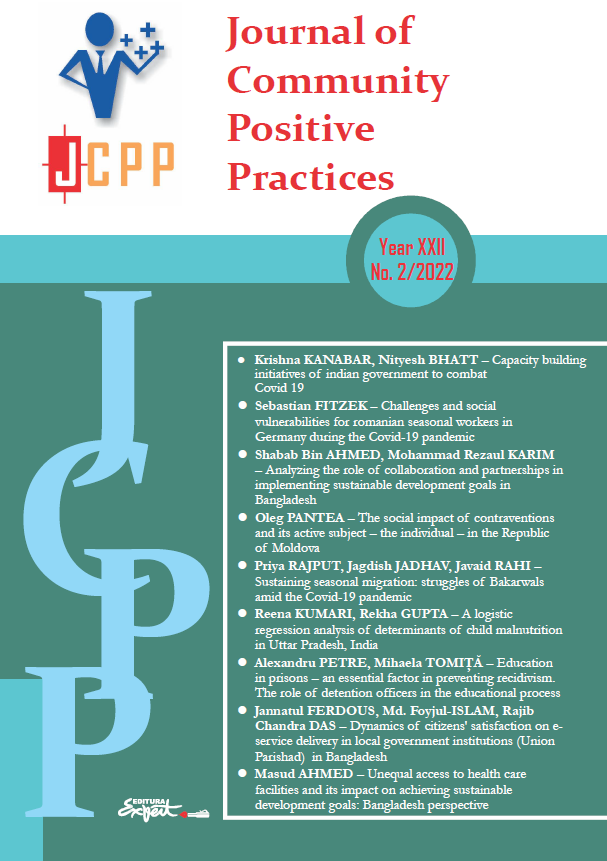A logistic regression analysis of determinants of child malnutrition in Uttar Pradesh, India
A logistic regression analysis of determinants of child malnutrition in Uttar Pradesh, India
Author(s): Reena Kumari, Rekha GuptaSubject(s): Education, Methodology and research technology, Social development, Health and medicine and law
Published by: Asociatia pentru Dezvoltare si promovare socio-economica Catalactica
Keywords: malnutrition; stunted; wealth index; education; contraceptive use;
Summary/Abstract: This paper examines the effects of socio-economic determinants on child malnutrition in Uttar Pradesh- the most populous and malnourished state of India. Using data from NFHS-4, this study highlights district-wide variations in nutritional status of children less than five years in the state. The percentage of stunted, wasted, and underweight have been taken as dependent variables, while main explanatory variables of child malnutrition were female education, maternal malnutrition (BMI), breastfeeding practices, children's place of residence, father’s education, wealth index of household, family planning, sex of the child, sex of the household and age cohort of mother. Logistic regression models have been applied in order to observe the association between explanatory variables and malnutrition. The findings revealed a high incidence of less stunted, wasted, and underweight infants in case of an educated parents, particularly educational level of mother. Wealth index representing the possession of assets by the household found to be an important indicator in the sense that children born to households with richer and richest quintiles showing better-nourished children aged under-5. The modern method of using contraceptive, breastfeeding practices, maternal malnutrition were also important indicators influencing the rate of malnutrition in children. The study suggested that imparting education to females, breastfeeding practices, economic status, and contraceptive use can play an important role in reducing nutritional status of children.
Journal: Jurnalul Practicilor Comunitare Pozitive
- Issue Year: XXII/2022
- Issue No: 2
- Page Range: 79-98
- Page Count: 20
- Language: English

